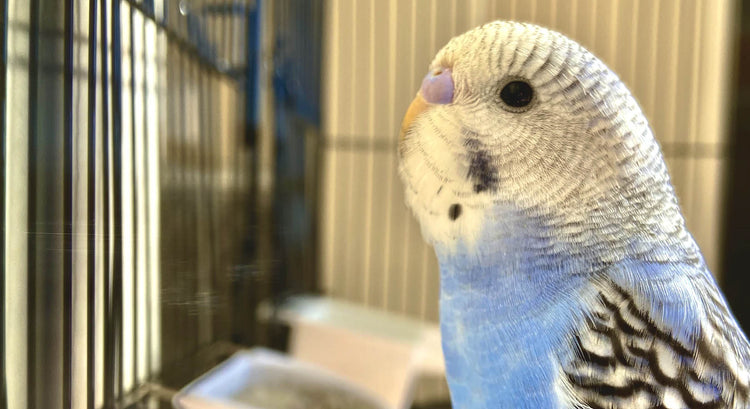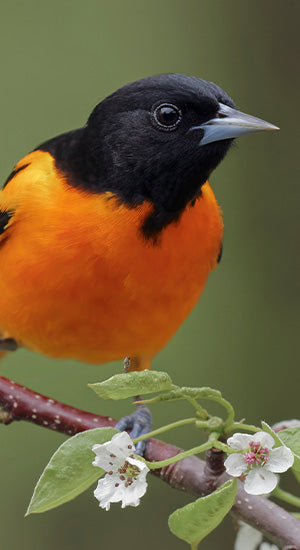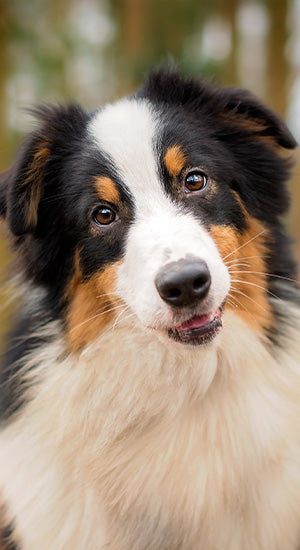Picking Out A Cage For Your Pet Bird

Picking out a cage for your bird can be very difficult and nobody wants to spend a large amount of money on a cage until they are sure that it's the right one for their bird. The employees of Exotic Wings and Pet Things (myself included) have also gone through the struggle of picking out the perfect cage so we completely understand! If you are looking to upgrade your current cage or pick one out for the first time, we want to help you throughout the whole process. Comment at the end if you have any questions or helpful information for us to add!
Cages are made with different bar spacing to ensure the safety and effectiveness of the cage. If the bar spacing is too wide your bird can get stuck between the bars or escape the cage entirely. Cages also have different bar thickness so that larger birds with stronger beaks aren’t able to break or damage the cage.
|
Bird Type |
Bar Spacing |
Bar Thickness |
|
1/4″ to 1/2″ |
2mm |
|
Up to ½” |
2mm - 2.5mm |
|
Up to 5/8″ |
2.5mm |
|
Up to 3/4″ |
2.5mm |
|
up to 1″ |
3.5mm |
|
Up to 1.5” |
5mm or more |
Bar Orientation:
Bar orientation is another important part of your cage. Many cages have vertical bars on the front and back and horizontal bars on the sides. Some cages have only vertical bars and some have only horizontal bars. Birds with clipped wings can benefit from horizontal bars but it is more of a preference than a necessity as they get around fine using vertical bars.
Horizontal Bars:
Vertical Bars:
Some birds require cages that accommodate their body type. Parakeets (parrots with long tails) need a cage that won’t damage their tail feathers when they climb. If the bar spacing is too small it may mess up the tail. Keep in mind that younger birds will mess up their tail no matter what cage they are in! The wingspan of your bird is also important. Your bird should be able to flap and exercise their wings inside the cage without hitting the sides of the cage. Birds generally benefit from a wide cage rather than a tall one. If your bird likes to walk and explore, consider housing them in a wider, more square cage instead of a cage that is tall and shallow.
Dimensions
The dimensions of your bird's cage is one of the most important parts to think about when choosing a cage. Housing your bird in a cage that is too small is the equivalent of living in your bathroom. Your cage can be as big as you'd like as long as it is customized appropriately. If there isn't enough toys and perches in the cage, you may want to consider downsizing. African species (African Grey, Poicephalus, etc.) are known to prefer smaller cages. These birds like to feel cozy and comfortable in their cage so make sure that your cage isn't too big if you are housing an African bird. High energy birds like Caiques, Lorikeets and Kakarikis need a larger cage to keep them from getting bored. A larger cage gives you more room for toys that will keep your bird stimulated and it will also give them more space to exert energy. Below are some average cage dimensions for different sized birds. Keep in mind that not every cage will have these exact measurements and should be used a reference only.
|
Bird Type |
Minimum Dimensions |
|
Budgie |
18”x18”x24” |
|
Cockatiel |
20”x20”x24” |
|
Conures Lovebird Parrotlet Poicephalus |
24”x24”x24” |
|
Caique Jardine Pionus |
24”x24”x36” |
|
Amazon Small Macaw Small Cockatoo African Grey |
32”x24”x36” |
|
Large Macaw Large Cockatoo |
40”x30”x75” |
Type of Cage
Every bird is different which is why it is so important for you to know what your bird likes so that they enjoy the times that they are in their cage. Dome top cages are beneficial for birds who like to stay up high and observe. Many Dome top cages have a "drawbridge" kind of door that allows your bird to perch and be out of the cage. There are also many different Play top cages that include at least one perch on top of the cage. Some have food bowls and ladders as well. Play tops are great for saving space while keeping your bird entertained. Keep in mind that some birds may get territorial with this sort of cage because the play top is above eye level and makes them feel dominant. The last option is a Flat top. These cages are perfect if you have a table top stand to put on top of the cage or your bird just doesn't like the dome top. Some of these cages include the option to open the top and create a temporary play top. All three options are suitable for your bird, it mainly depends on what you and your bird like!
Dometop Cage
Playtop Cage
Flat Top Cage
Accessories
When the time comes to personalize your cage you may not know where to begin. One of the most important parts of your cage is the grille. Not only does the grille keep your bird from walking in it’s own poop, it also keeps your bird from foraging through the newspaper to find food and eating poop instead.
Perches take up a good amount of space in your cage which is why it’s a good idea to have a variety of different sizes and materials for your bird to walk on. Giving your bird perches with different diameters allows them to strengthen their feet and grip better. Rope perches are a good option for your cage because they are soft on the feet. We also recommend a cement perch to help file down your bird's nails. Keep in mind that the perches in your cage do not need to go all the way from one side to the other. Your bird will get more exercise climbing from one perch to another and using the cage bars to get around. It is also important that you don’t place any perches directly above food and water bowls otherwise you may be cleaning them more frequently.
Food And Water
Bacteria are more likely to thrive in plastic than in stainless steel. This is because plastic dishes can be scratched which leaves a perfect groove for bacteria to grow. If you use plastic bottles or bowls it is very important that you disinfect them daily and buy new ones every year or if you notice they start to smell. Stainless steel bowls are a better alternative because they will last much longer and are less likely to collect and grow bacteria when cleaned regularly.
Things To Avoid
Round Cages
There are a few things that we suggest avoiding when picking out your cage. The first thing is making sure your cage doesn't have any V's in the wiring. Round cages have wires that get narrow at the top which can be dangerous for your bird if they get caught.
Dividable Cages
Some cages are made so that they have a dome top and a play top that you can divide. If you choose to buy one of these cages you may notice that your bird only spends time in the top part of the dome top. While these cages may give your bird more variety, it is likely that they will only want to be in the highest part of the cage. If you choose to house two birds in this type of cage with the divider separating them it is crucial that those birds get along otherwise you will need to put a visual barrier between them so that the birds do not try to injure each other through the bars.
Corner Cages
Corner cages can also cause issues with your bird. Some corner cages only have 3 sides, this means less room for your bird. It also means that your bird will have two sides of the cage against walls. This can result in behavioural issues and impact the bond that you've created. Even though it may be a convenient way to house your bird and save space, it might not be the right cage for your feathered friend.
Bamboo Cages
Bamboo cages are popular in other parts of the world but may not be the best choice for your bird here in Canada. Importing and other fees raise the price of these cages and many people have to replace their cage frequently due to the difficulty of cleaning and disinfecting. These cages also build bacteria which makes them less desirable for long term cage options.
Fabrics
Some snuggle huts have loose fabrics that your bird may chew on and ingest or get caught in. The same is true for rope perches, cotton toys and other cage accessories made with similar materials. If you notice your bird chewing on any fabrics in the cage make sure to cut off the frayed edges so that your bird does not hurt themselves or you can take the material away entirely and replace it with something safer. For example, if you currently have a snuggle hut made of fabric you could replace it with one made of PVC.
Paint
Always avoid cages with paint that is toxic to birds. This includes paints with lead, zinc and chromate. If you are unsure if your cage is safe for your bird, contact the manufacturer or the store that you purchased it from. Powder coated cages are a commonly used cage because they are less likely to rust, chip or fade in colour. They are also more affordable than stainless steel cages. Stainless steel cages are popular because they are completely non-toxic, rust-free and easy to clean. They are also very aesthetically pleasing which adds to their rising popularity. These cages are quite expensive because of their high quality materials but are definitely worth the expense. Whether you buy a powder coated cage or a stainless steel one it is important to confirm that it was made with bird-safe materials.










